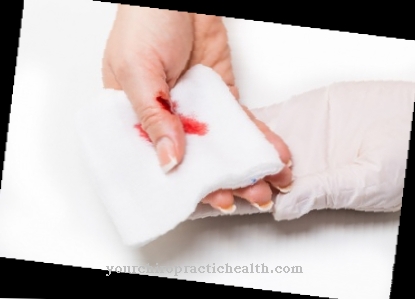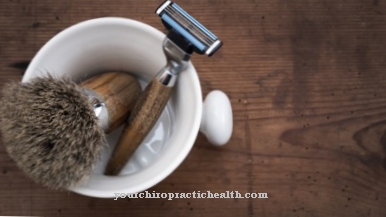At a Care bed it is a bed that is adapted to the physical needs of people with severe chronic illnesses or physical disabilities. Care beds are subject to strict legal regulations. They are used in both home and inpatient care and serve both the patient and the nursing staff.
What is a care bed

Nursing beds are now used in a wide variety of ways for people in need of care in home and inpatient care. The concept for care beds was originally inspired by technical innovations in hospital beds. Over time, the knowledge grew that lying healthy increases the resistance to the existing disease and leads to faster recovery.
First of all, beds were developed for hospitals that met the needs of patients for comfortable and pain-free lying. As a result of the positive experience gained, more and more technical innovations were introduced, which contributed to accelerating the healing process.
But patients who are constantly bedridden also benefited from the developments. The possibility of constant changes in position meant that pressure sores were better avoided. Due to the electrical adjustability of the beds, the patient could, if necessary, bring about changes in position himself and thus relieve his bones and muscles.
The innovations in the hospitals were adopted by other inpatient facilities such as old people's homes and nursing homes. Nursing beds have also proven their worth in home care.
Nursing beds now have the same functions as hospital beds. They also make it possible to treat patients with chronic diseases more frequently in the home setting. Sometimes the care bed is colloquially referred to as a senior citizen's bed. However, in the specialist bed trade this is only a normal bed with an increased lying area.
Shapes, types & types
Basically, a care bed consists of a base frame with a bed frame and an adjustable slatted frame for setting several positions. At the same time, the lying surface must be able to be adjusted to a minimum height of 65 centimeters.
Furthermore, the equipment includes permanently adjustable castors, which must have a diameter of at least 10 centimeters. The mattress is not subject to any special regulations. The patient's habits play a major role here.
Special equipment is also available for the care bed as required. These include, among other things, a lifting aid (bed gallows), angle adjustment of the lying surface for medically sensible positioning, a side rail, fusion holder, footrests and, if necessary, fixation devices for restless patients.
There are also other designs of the care bed. They basically have all the necessary basic functions with additional functions due to the design. The so-called stand-up bed offers the patient electromotive support when getting up. If you are confined to bed for a long time, it serves to stimulate the breathing function and the bowel and bladder activity. Furthermore, there are insert frames that replace the conventional bed frame of a care bed and thus integrate the bed into the design of the room.
In addition to the basic requirements for a care bed, hospital beds also have special requirements in terms of hygiene, stability, durability and intensive care. There are also side beds that have a lying surface divided into longitudinal segments. A good protection against pressure sores can be achieved by lateral repositioning.
The standing bed is a special variant. In addition to all the functions of a nursing bed, a paralyzed patient can be brought into the standing position in a fixed state. The circulation, breathing, bladder and bowel activity are stimulated.
Structure & functionality
The care bed supports bedridden patients in performing important bodily functions. At the same time, however, it also supports the caregiver in their daily work. The long-term goal is to ensure a higher quality of life for the patient and to achieve improvements in the daily coping with the life situation.
Thanks to the angle-adjustable back part, a reasonably stable half-sitting position can be achieved without additional pillows. This simplifies food intake and supports pain-relieving therapies. The division of the lying surface opens up further therapeutic positioning options. The set angle stabilizes the storage. The lying surface is not adjusted by unconscious movements.
The work of the caregiver has been ergonomically improved by raising the lying surface. Furthermore, the lying surface can be lowered to make it easier to get into bed.
In recent years, the safety standards of the beds have been increased. After several short circuits due to moisture and the resulting fires, the requirements for moisture protection have increased. Today, all care beds must meet the EN 60601-2-52 standard for hospital beds. It is an international standard that ensures the basic safety and all performance characteristics of medical beds for adults.
In the last few years, two developments in particular with regard to care beds have been advanced. The technical equipment for handling the control and the design are subject to constant improvements. The aim of the design development is to obscure the visible differences between a normal bed and a care bed. Furthermore, the aim is to achieve quick assembly and disassembly by simplifying the equipment and thus to reduce costs.
Medical & health benefits
Care beds have a great medical benefit for those affected. At the same time, they also serve to facilitate the care situation. The care bed should guarantee the patient restful lying and sleeping.
It also ensures that the patient is comfortably positioned and adapted to his body shape, weight and clinical picture. It enables special positioning and movement forms to relieve the patient. The nursing staff can also hand over work processes such as food or wash the body under easier conditions. Furthermore, the care bed enables the special hygiene requirements to be met in care.

















.jpg)



.jpg)

.jpg)




